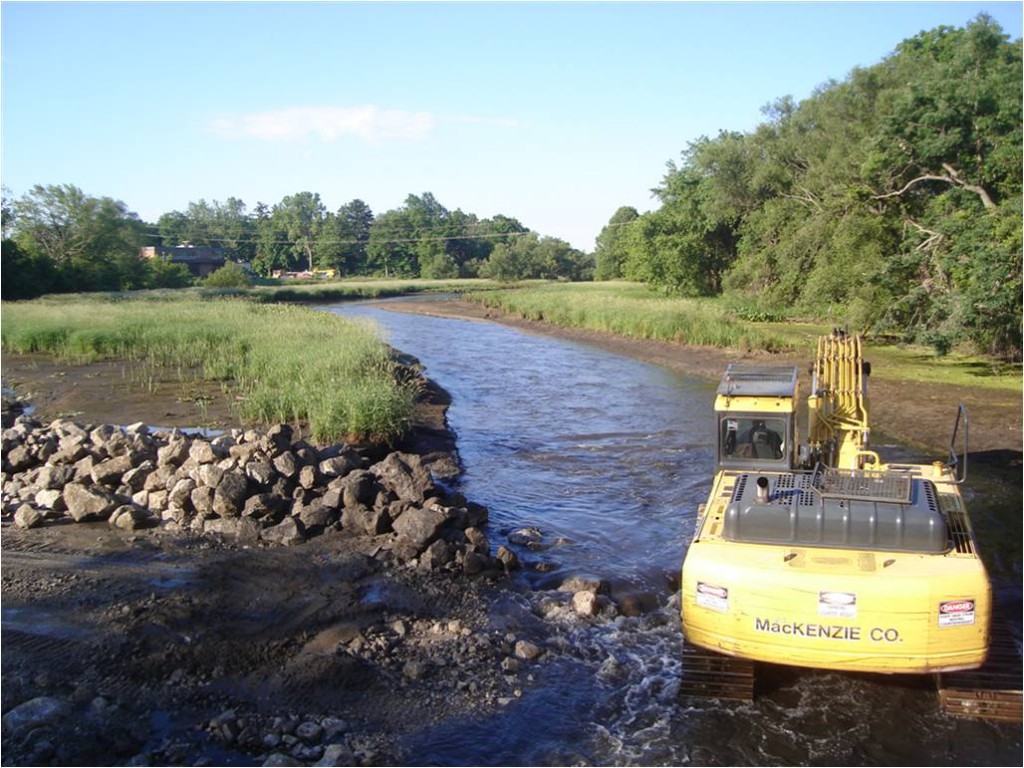A “stream course” is the path and speed at which a river or stream flows through the land.
Why we need to protect stream courses
If the flow of a river or stream is too slow, sediment* can build up and choke aquatic life and streams can dry up. If the flow is too high and fast, erosion and flooding can occur. Curvy, naturally flowing rivers and streams introduce life sustaining oxygen to aquatic life and move sediment along at a healthy pace.
[*Sediment is the loose sand, clay, silt, and other soil particles that settle at the bottom of a body of water. Sediment can come from soil erosion or from the decomposition of plants and animals, as well as stormwater runoff from roofs and streets.]
How communities can protect stream courses
- Reduce the amount and speed of stormwater runoff. There are many ways to do this such as green infrastructure projects, preserving and planting shoreline buffers, and capturing rainwater and snowmelt before they enter our stormdrains.
- Remove dams and prevent new ones
- Restore channelized streams by making them curvy again
- Restore aquatic habitat with rocks, trees, and other vegetation
How HRWC protects stream courses

HRWC creates and supports many green infrastructure projects. We plant rain gardens in neighborhoods, educate the public on the value of green infrastructure (GI), and work with decision makers on incorporating GI into development plans.
Green infrastructure is an integrated approach to land use that reduces and treats stormwater at its source to benefit the environment, economy, and communities. Examples of GI include rain gardens, trees, natural area conservation, bioswales (channels with plants and trees in them), permeable (porous) pavements, rain barrels, and green roofs.]
HRWC also works with local partners to remove and better manage dams. We protect stream flows in other ways too. For example, we lead various stream and river restoration projects, such as the 2015-2016 fish habitat restoration project in Ypsilanti and restoring a section of a channelized stream in the Norton Creekshed in Wixom (2017-2019).
How you can protect stream courses
Slow the flow by capturing stormwater. Here’s how:



